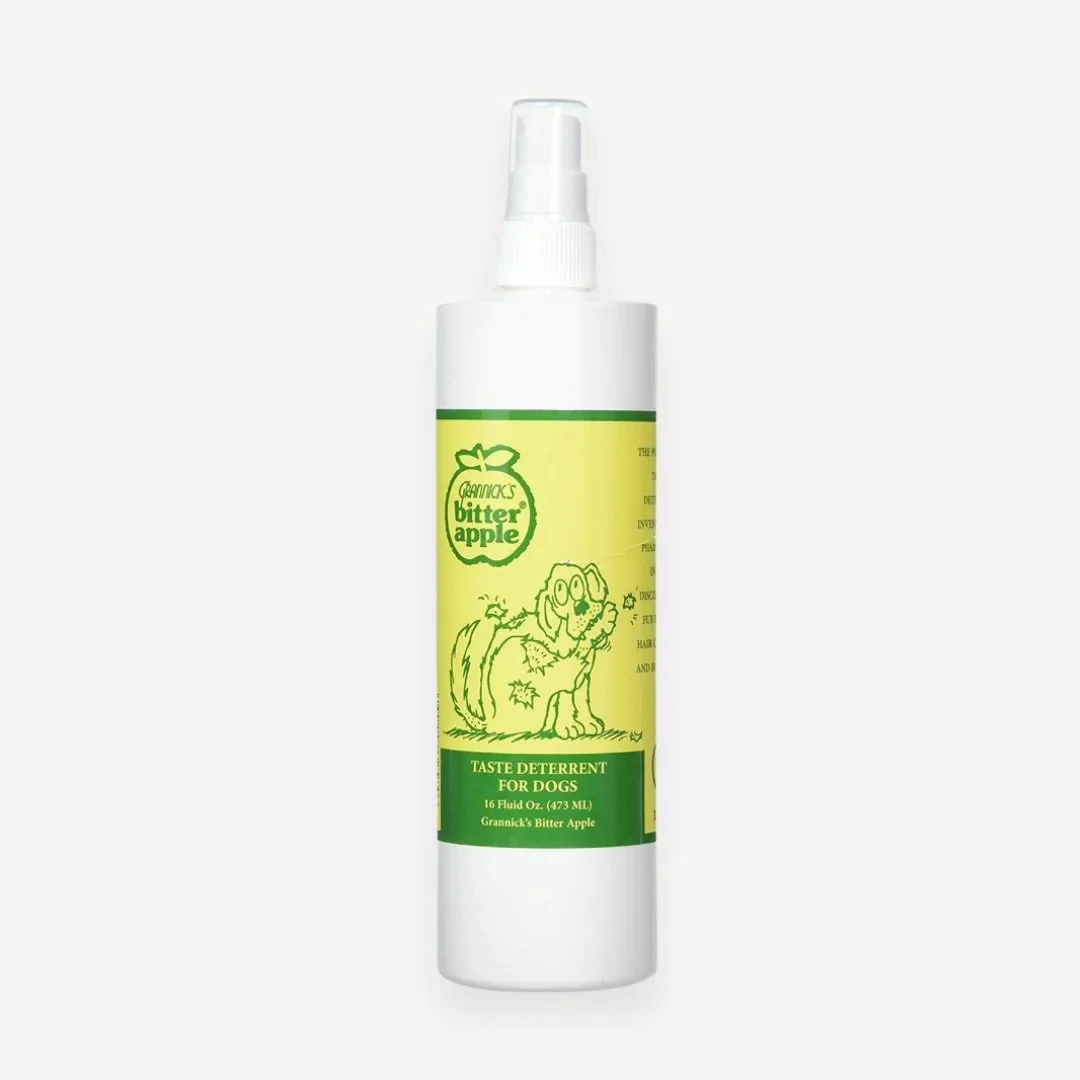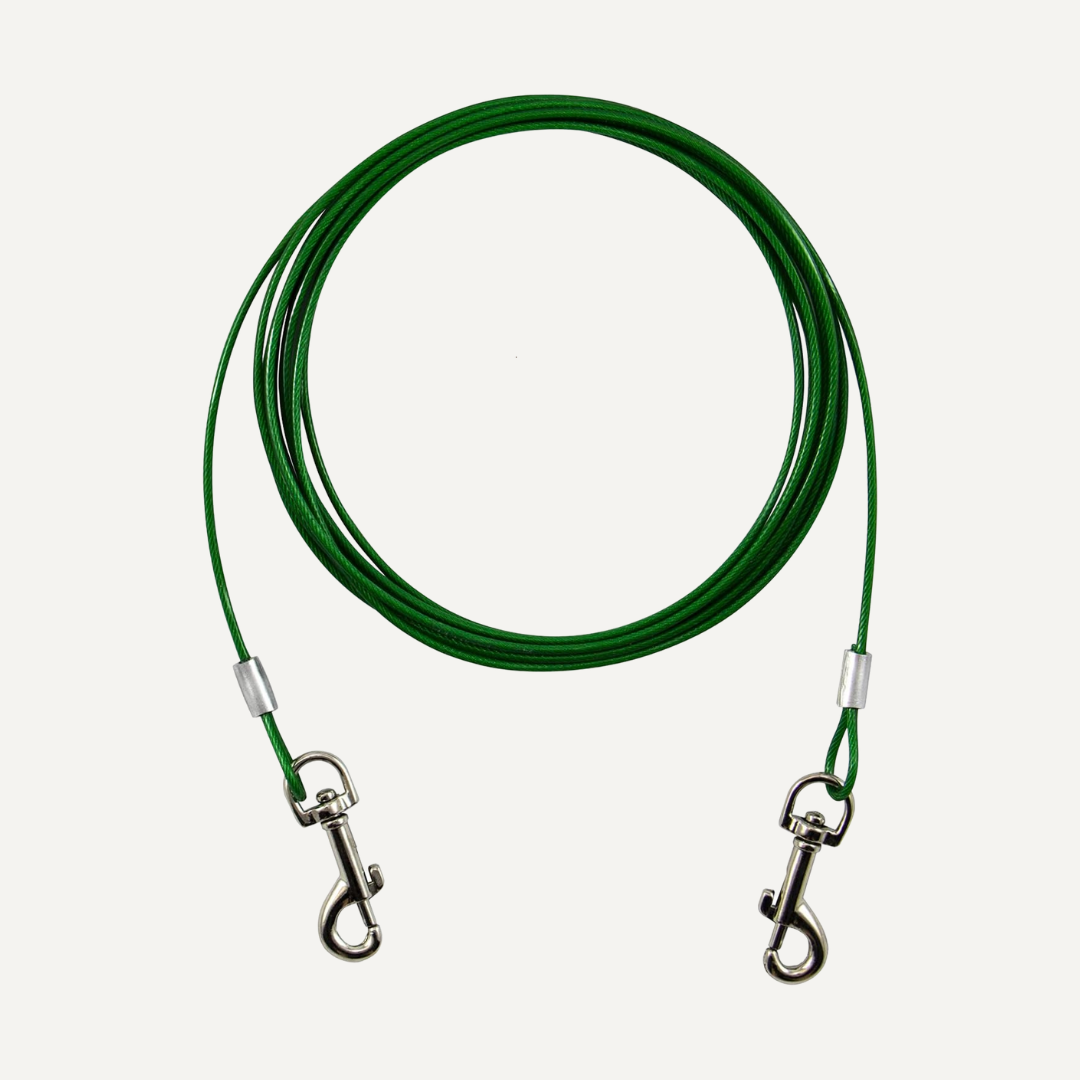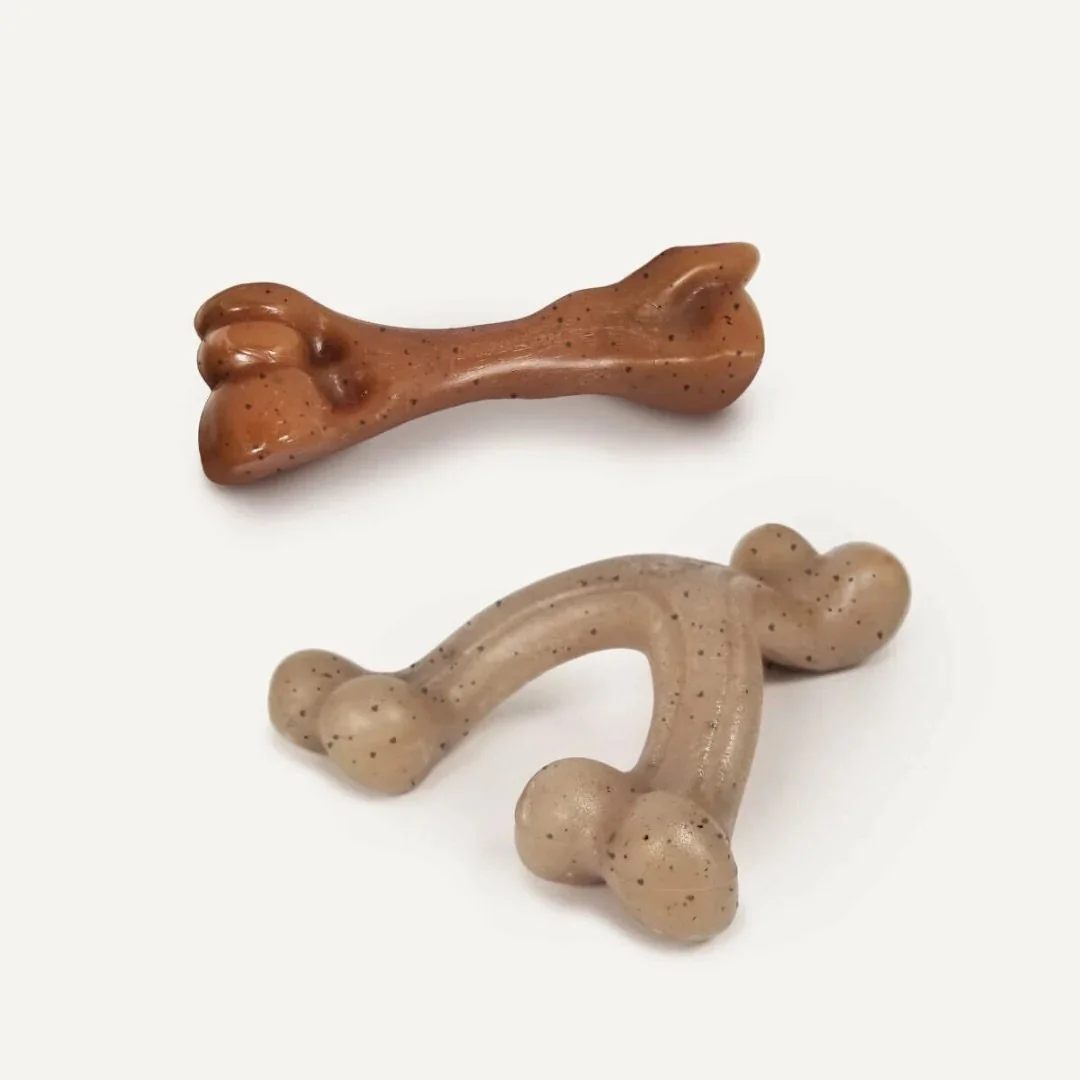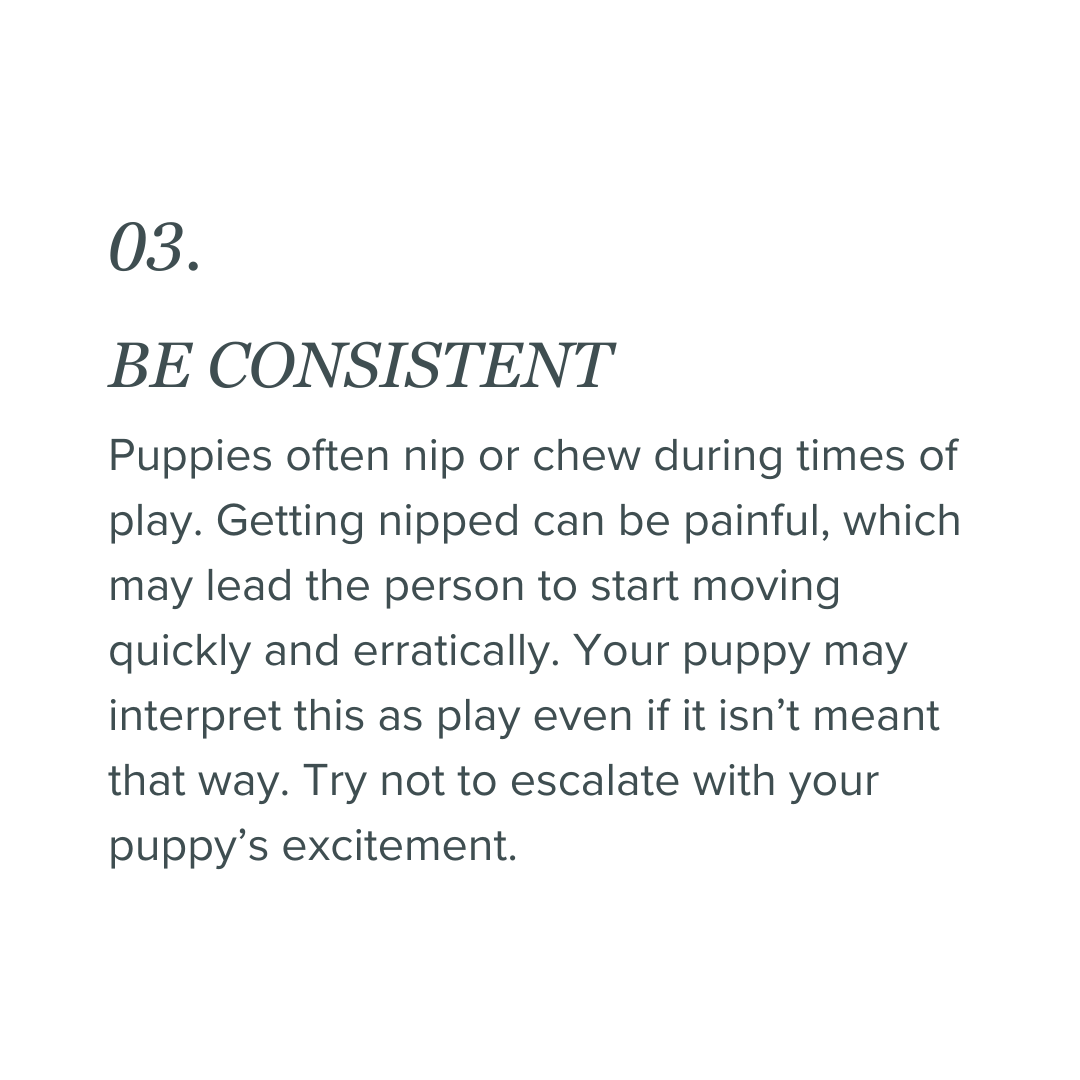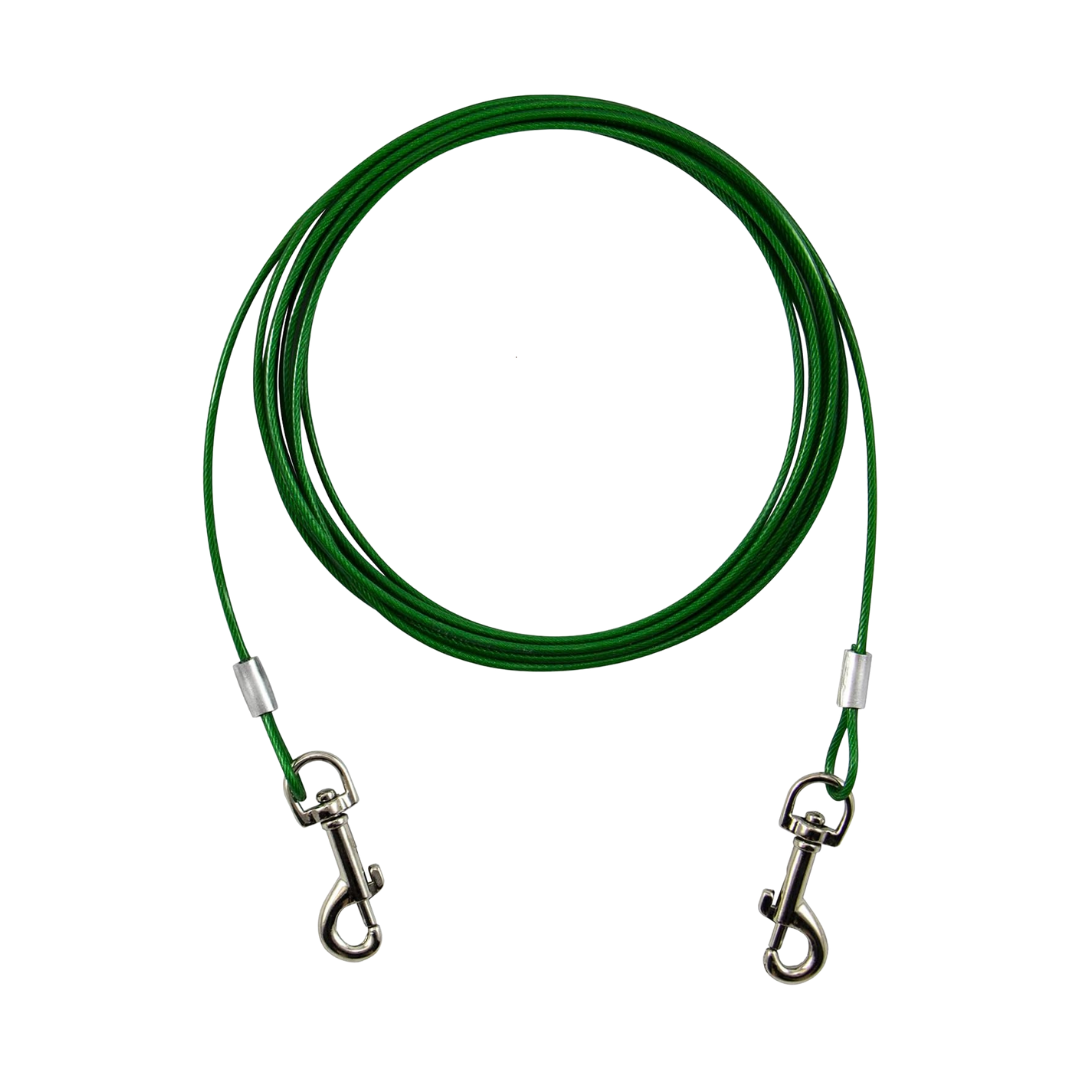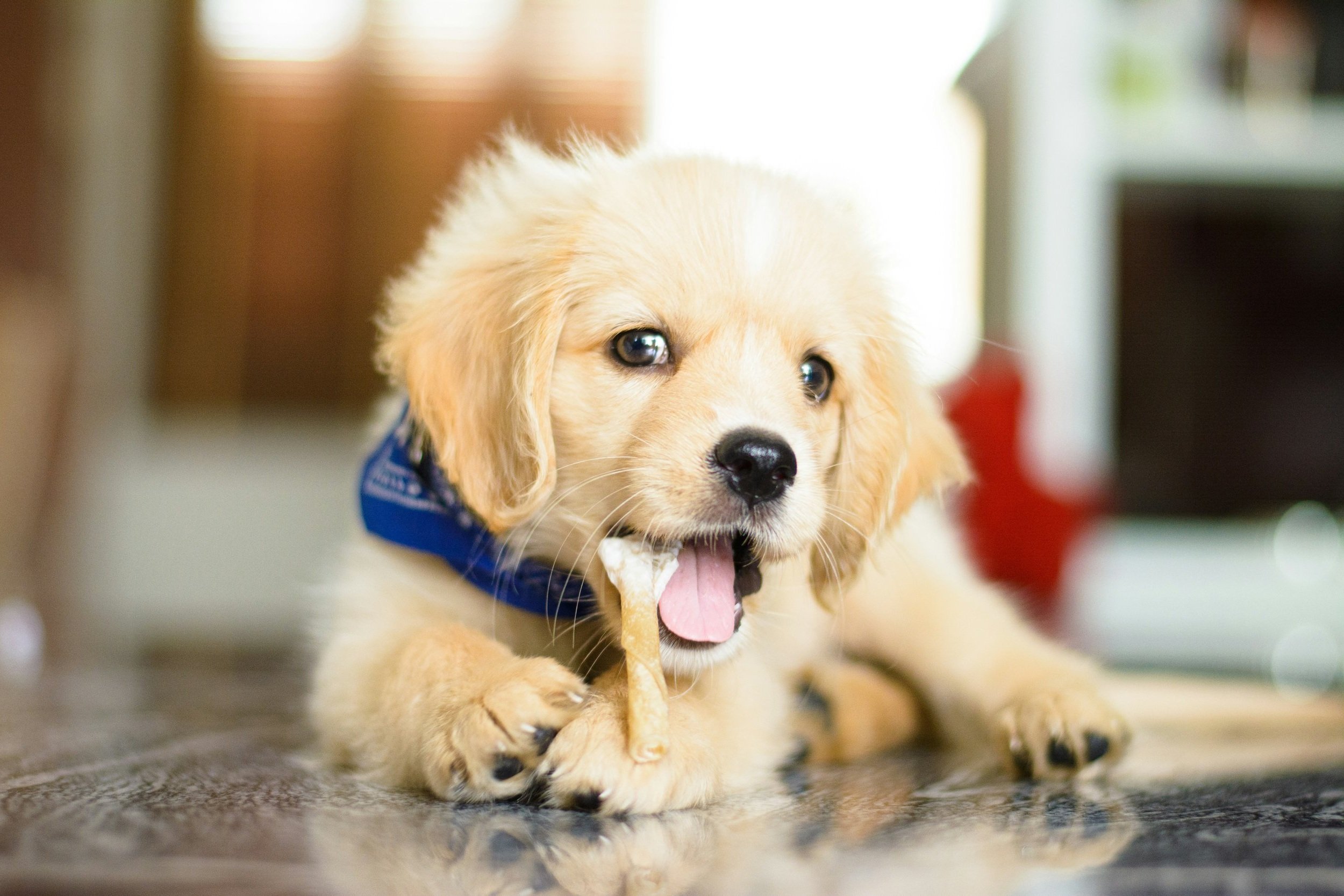
Nipping is a developmentally appropriate behavior for young puppies. Puppies, like human babies, explore the world by putting it in their mouths. Apart from the exploration aspect of the behavior, there is also the teething aspect. Even after teething is over, we must remember that dogs play by putting their mouths on each other. Dogs also go through a chewing phase from 7-9 months.
WHAT YOU WILL NEED
PUPPY CHEW
These long lasting chews are a staple in every home with a puppy. Buy a few and keep them wherever you puppy spends most of their time.
INDOOR PUPPY TETHER
Keeping your pup close is the key to success when potty training a new puppy or rescue dog. For supervised use only.
COW HOOVES
Yup. It’s exactly what you think it is. And it works. If chew toys aren’t enticing enough, your family heirlooms won’t be safe from “baby Jaws.”
BITTER APPLE
This spray is a great way to help deter your puppy from chewing on inappropriate items. Unless you like the chewed look. Totally your call.
NOTE: All products have affiliate links, which means I earn a small commission on each item purchased from the links. I appreciate your support and wish you happy training!
KEYS TO SUCCESS
NIPPING & CHEWING OVERVIEW
One of the most frequent questions I get from puppy owners is, “How do I get my puppy to stop nipping?” The quick, but slightly frustrating answer is, “slowly and over time.” Nipping is just what puppies do—like little furry toddlers, they explore the world by sticking everything in their mouths. Add in the fact that they’re teething, with those razor-sharp baby teeth, and you’ve got a recipe for some serious nipping action. Most pups are done teething by 6 months, but even then, they’re still figuring out the whole "no teeth on people" rule. Plus, dogs naturally play by mouthing each other, and they hit a chewing phase around 7-9 months, just to keep things interesting.
Now, while nobody wants a full-grown dog using them as a chew toy, let’s clear up a common misconception: there’s a big difference between a mouthy dog and an aggressive one. I hear people lump the two together all the time, but that’s just not accurate. One of the most persistent myths in dog training is that if a dog puts their teeth on you, it’s basically the same as biting. But here’s the thing—while a dog can be both mouthy and aggressive, they’re not automatically connected. A mouthy dog isn’t necessarily an aggressive one; they’re just being socially inappropriate.
NOTE: All products have affiliate links, so I earn a small commission on each purchase. Happy training!
TETHERING
When tethering, opt for a cable leash or tie-down instead of a leather or fabric leash. These are less likely to get tangled, and your puppy won’t be able to turn it into a chew toy. And remember, never leave your puppy alone while they’re tethered—it’s not worth the risk.
Tethering is fantastic for teaching your dog good house manners from the start. They can’t sneak off into another room, so if they’re up to no good, you’ll know right away and can give them timely feedback.
If your puppy is doing something they shouldn’t, don’t just shout across the room. Otherwise, your dog will quickly figure out that while you might not like what they’re doing, you’re not really going to stop them. The best move? Get up, go over, and put a stop to the behavior right then and there—let them know you’re not just all talk!
CHEW TOYS
While getting rid of nipping takes some time, there are a few tricks to help move things along. First off, always have something appropriate for your puppy to sink their teeth into. Keep a stash of chew toys handy during playtime so you can quickly steer those sharp little teeth in the right direction. Whether you go for synthetic or natural chew toys is up to you—synthetic ones last longer, but natural chews are usually tastier and more tempting. Personally, I like to keep a variety of both on hand to keep the pup guessing.
And here’s a pro tip: oversized plush toys are a lifesaver. The extra size gives your puppy plenty of room to bite without accidentally chomping on your skin during playtime. It’s a win-win!
BITTER APPLE
If your dog is chewing on things they shouldn’t, a deterrent spray might do the trick. These sprays taste awful and can be applied to anything your dog seems too eager to chew. The most popular one is "Bitter Apple." Just remember, you’ll usually need to reapply the spray daily to keep it effective.
While these sprays are often used on dogs for medical reasons like hot spots or on furniture to keep it safe, I’ve also been known to spray it on my hands and clothes when dealing with nippy puppies. Given how strong their nipping instinct is at that age, this isn’t a magic fix, but it’s a handy tool to have in your arsenal. I especially recommend it for young kids who might not have the ability to redirect a puppy or stay still when those little teeth come their way.
FAQs
-
This is hands down the most common puppy question I get from parents, and unfortunately, there’s no simple answer. Let's break down why it’s tricky and how you can tackle it.
Here’s the usual cycle: the puppy starts nipping at the kids, and since puppy teeth are basically tiny needles, it hurts—a lot! The kids naturally respond with high-pitched noises and quick movements, which only fuels the puppy’s excitement.
So, what can we do? First off, we’re dealing with two little beings who aren’t exactly known for their self-control. We can’t expect puppies or kids to have the same restraint as adults, which means you’ve got to be actively involved. Never leave your children alone with the puppy.
To set your puppy up for success during playtime with the kids, consider tethering the puppy. This way, if your child gets overwhelmed, they can step out of the puppy's reach. If the nipping is relatively calm, encourage your child to keep their movements slow and deliberate. Nipping hurts the most when it’s on the hands, so protecting those fingertips is key. If your child is sitting, they can try sitting on their hands. If they’re standing, have them make fists and cross their arms. If the nipping starts to get out of control, that’s the cue for your child to calmly walk out of reach.
Another tip is to use a bitter spray, like Bitter Apple, on your child’s hands and clothing. While it won’t completely stop the nipping, it can help reduce it. Just make sure your child is okay with the taste if they happen to put their hands in their mouth—it’s pretty unpleasant! Although these sprays are generally safe to use on human skin, it’s always a good idea to do a patch test first. Spray a small area, wait 24 hours, and make sure there’s no reaction before applying it more broadly.
-
Yes and no. Your puppy will get their full set of adult teeth by around 6 months (though this can vary by breed and size). Once they’re done teething, you’ll likely notice a decrease in chewing, but don’t expect it to disappear entirely. Chewing actually releases endorphins in your dog’s brain, making it a self-rewarding activity. So, even after teething is over, dogs will continue to chew throughout their lives because it’s a great way for them to relieve stress.
As for nipping, it can become deeply ingrained in your puppy’s play behavior. This happens partly because nipping is a natural way dogs play with each other and partly because of how people often react to it. When a puppy nips, most people—especially kids—tend to quickly move their hand away and might even let out a high-pitched noise. For your puppy, fast movements and fun sounds are a strong play signal, so nipping you might lead to a game in their mind. What starts as a playful nip can quickly escalate into a pattern where your puppy thinks it’s all part of the fun, even if it’s not exactly fun for you.
-
Believe it or not, this behavior is totally normal and usually starts around 3-4 months old. It seems to be linked to your puppy being overtired. Much like overtired human kids who get a sudden burst of energy and lose all self-control, puppies can do the same.
I wouldn’t recommend trying to use this as a teaching moment—your puppy isn’t in the right mindset to learn anything at this point. Instead, try crating them when they start to spiral. Most puppies will fall asleep once they’re in the crate. If your puppy hasn’t yet formed a positive association with the crate, it might be better to place them in a playpen or a gated area like the kitchen. This way, they can calm down without continuing to nip at you.
-
I’m not a fan of the old “yelp in pain” trick when your puppy nips you. Sure, if it works for your dog, awesome! But more often than not, it just gets puppies even more revved up because now you’re making a fun squeaky noise—just like their favorite toy.
When you’re playing with your puppy, try to avoid turning into a human pinball, especially when they start nipping. The instinct to jump and jerk away just makes things worse since dogs love to chase anything that moves fast. Instead, channel your inner zen master—move slowly and deliberately, and keep your sensitive bits (like those poor fingers) out of reach. When a puppy starts getting a little too nippy but isn’t totally off the rails, I’ve been known to just sit on my hands for a bit. It keeps me from accidentally egging them on, and it saves my fingers from turning into chew toys.

